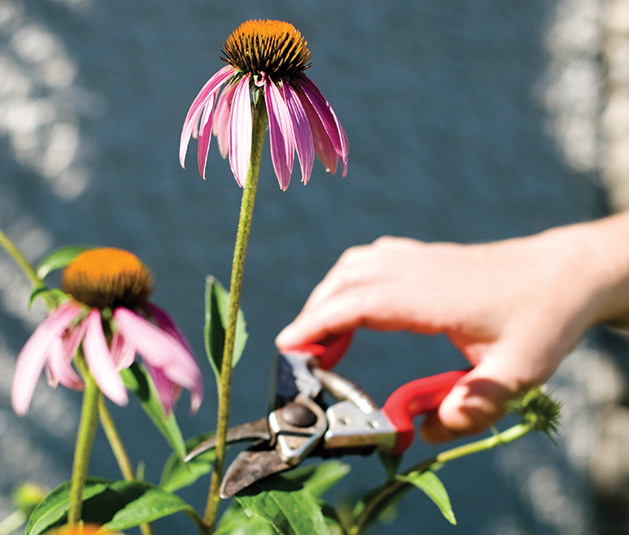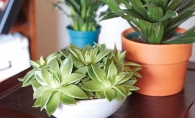
Plymouth resident Rebecca Chesin, a licensed marriage and family therapist (LMFT) who lives in Plymouth and practices in Minnetonka, believes in the power of gardening with native plants.
Chesin, who grew up in Plymouth, traveled about, and then, “like Dorothy in the Wizard of Oz,” returned home with her husband, Andre Guirard. It was Chesin’s move back to Plymouth in 2000 that sparked her interest in native plants. Plymouth was offering grants to residents for converting lawns into more environmentally conscious landscapes. She used the grant to establish a native plant garden and from then on, it was love.
Chesin gardens with an eye not only toward beauty, but also care of the earth. She continues to use native plants for her landscape. “I like the tough love approach of gardening with native plants,” says Chesin. “You have to water them the first year, and a little bit the second year, and then you don’t have to water them.” Chesin explains that the pollen, nectar and seeds that native plants produce attract and support bees and birds.
Gardening has long been known to be therapeutic for its benefits of time in nature, its self-directed pace, and the satisfaction of seeing results from your work. Being outdoors on a beautiful day just feels good, but Chesin believes the benefits of gardening go far beyond that. “Gardening has a connection to mental health—it fulfills the two most common urges,” says Chesin. “The urge to create beauty and the urge to destroy. To have a garden, you have to do both.”
To help regulate the nervous system, contact with nature is important,” says Chesin. “Your environment has an effect on mood, and there’s evidence that physical surroundings actually impact brain function. Also, people who have contact with dirt have less anxiety and depression. The soil itself has microbes that are important to physical health.”
In the winter, Chesin works with flowers. “It’s important to have living material inside the home,” she says. “It brings calming and connection.” She is a student of ikebana, the Japanese art of flower arranging, which provides her with her winter fix of nature.
With the prevalence of anxiety and depression in our culture today, Chesin believes that attention to one’s environment is crucial.
“It’s important to arrange your home so that you can comfortably live in it, and it needs to be attractive to you,” she says. “Anxiety is who you think you should be; relaxation is who you are,” says Chesin, “so it’s essential that home authentically reflects the people who live in it.”
In addition to the usual considerations for planting, like sun and soil, Chesin suggests considering what to plant from the inside out. “Think about what kind of view you would like to have from specific places inside your house. For example, 'When I look out my bedroom window, I want to see—' and fill in the blank. 'I want to see lavender,' or 'I want to see black-eyed Susans.'
“Home has to serve a lot of purposes—shelter of course, and also comfort and reflection,” say Chesin. “It’s good to be mindful of your surroundings, both inside and out.”
To learn more visit the University of Minnesota Extension website here.









